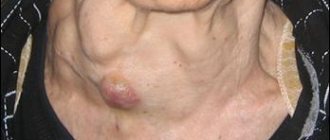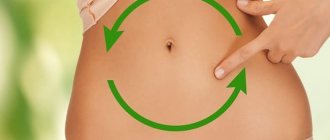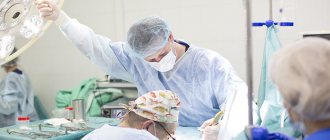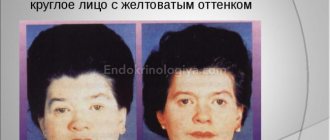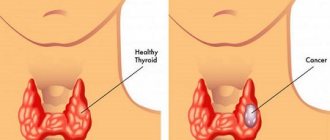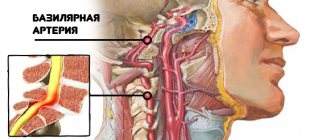The thyroid gland is an endocrine gland that produces iodine-containing (thyroid) hormones. Regulates the release of other hormones through the secretion of its own. Its work is the basis of all metabolism.
Thyroid hormones are involved in the processes of growth, development and normal functioning of the whole organism. They are important for the functioning of human immunity and its restoration at the cellular level. Therefore, the impeccable function of this organ is of great importance for the health of the entire body.
Anatomy and functions of the thyroid gland
The thyroid gland is located on the front of the neck, consists of two lobes and an isthmus between them; normally its weight ranges from 20 to 30 g. Its size can vary throughout life even in the same person. It depends on age, diet, medications and many other factors. The thyroid gland is not in a static position; it moves slightly when swallowing or turning the head.
The thyroid gland consists of follicles - round formations that are filled with colloidal fluid. The follicles are separated from each other by thin connective tissue, which contains a large number of lymphatic and blood capillaries, as well as nerve endings. The colloid consists of thyroglobulin (a protein that is synthesized from the amino acid tyrosine) and iodine atoms. To form thyroxine, four iodine atoms are required, and for triiodothyronine, three. Without iodine, the synthesis of thyroid hormones is impossible. These components are not produced by the body on its own, but come from food. From the colloidal fluid, hormones enter the blood.
After the hormones T3 and T4 enter the blood, they combine with transport proteins and are in an inactive state. As needed, they are detached from transport proteins and perform their function. The hypothalamus and pituitary gland are responsible for regulating the production of these hormones.
In addition to thyroid hormones, the thyroid gland produces calcitonin, which regulates calcium-phosphorus metabolism.
Pathologies of the thyroid gland can be divided into groups:
- diseases resulting from a lack of thyroid hormones (hypothyroidism);
- diseases with increased levels of hormones in the blood (hyperthyroidism or, in other words, Graves' disease);
- congenital abnormalities (underdeveloped or completely absent thyroid gland, its incorrect position);
- inflammatory diseases of the gland (thyroiditis);
- various forms of goiter (endemic, sporadic, toxic);
- tumors.
Popular questions
I haven’t had my period for a year now, I had an ultrasound of my thyroid gland and everything is fine!
What to do? To find out the cause of amenorrhea—the absence of menstruation for more than 6 months—a consultation with an obstetrician-gynecologist and an ultrasound of the pelvic organs is necessary. Based on the results of the examination, ultrasound, and your age, a plan for further examination and treatment is formed.
Good afternoon, polycystic ovary syndrome, the thyroid gland is normal, thyroid hormones too, hormones on days 2-4 of the cycle (it seems only DHEA-SO4 is increased).
If, according to the result of an ultrasound of the pelvic organs, there are more than 10 follicles in the ovaries and the volume is increased by more than 8.5 cm3, then it is recommended to take combined oral contraceptives. Considering the results of hormone levels, I would recommend taking a combination of ethinyl estradiol and cyproterone for at least 6 months.
Hello, Oksana Anatolyevna, I have type 1 diabetes and menopause for 2.5 years, severe dryness and itching in the intimate area, the gynecologist suggested Ovestin, but there are so many contraindications that I’m afraid to use them. I also have cystic mastopathy. Maybe there are some other medications that relieve the symptoms of dryness and itching? Thank you in advance! Hello! To eliminate the manifestations of dryness in the genital tract during menopause, there are 2 groups of drugs: those that do not contain and those that contain a hormonal component corresponding to the age group. You can start by using non-hormonal drugs. These include Ginocomfort gel with mallow extract. Discuss with your doctor the possible risks of using the hormonal drug and clarify the benefits. There is a domestic drug of this group - Orniona cream, which can also be used.
The doctor prescribed hormones Model Trend, menstruation lasts 12 days, sometimes accompanied by vomiting.
Hello!
If this is 1 package of taking the drug, then such an adaptation may occur. If the volume of discharge increases, it is better to contact your doctor again to adjust the treatment. For an accurate diagnosis, contact a specialist
Hypothyroidism
A disease of the thyroid gland caused by an insufficient amount of thyroid hormones in the blood is called hypothyroidism.
According to statistics, 1 out of 1000 men and 19 out of 1000 women suffer from this disease. Diagnosis can be difficult, because the course of the disease is slow, without acute conditions. The disease affects the functioning of all body systems, because hormones are involved in important biochemical reactions that regulate metabolic processes and the synthesis of sex hormones. If the disease is not treated, then the most important systems - the cardiovascular and central nervous systems - are at risk.
Hypothyroidism is divided into primary, secondary and tertiary. When, due to disruption of the thyroid gland itself, the secretion of hormones decreases, this is primary hypothyroidism. Secondary and tertiary are associated with impaired regulation of hormone production, for which the pituitary gland and hypothalamus are responsible.
Reasons for the development of the disease
The main cause of hypothyroidism is inflammation of the thyroid gland - autoimmune thyroiditis (Hashimoto's disease). But there are many other factors:
- congenital underdevelopment of the thyroid gland;
- removal of the thyroid gland;
- consequence of radiation therapy for tumors, radioactive exposure;
- iodine deficiency conditions;
- tumor formations in the thyroid gland;
- pituitary adenoma;
- meningoecephalitis involving the hypothalamic region;
- severe head injuries;
- long-term treatment with serotonin drugs;
- chronic autoimmune diseases, as a result of which antibodies to thyroid hormones of the thyroid gland appear;
- disturbances in the transport of hormones due to defects in transport proteins.
Symptoms of hypothyroidism
The symptoms of this disease may not be clearly expressed, especially in the early stages. You should be wary if you have:
- general weakness, lack of vitality, muscle pain and cramps, numbness of the limbs, stiffness and slowness of movements;
- low blood pressure, decreased heart rate;
- lethargy, apathy and depression, memory impairment;
- deterioration of hearing and vision;
- pale and yellowish skin, its dryness and flaking;
- brittle hair and nails;
- swelling of the face and limbs;
- with a unchanged diet, weight gain;
- in women, menstrual irregularities, decreased libido;
- impotence in men;
- decreased immunity;
- disorders of the digestive system: frequent constipation, gastritis, nausea and vomiting.
Diagnostics
To confirm the diagnosis, the endocrinologist must conduct an initial examination, palpate the thyroid gland, collect anamnesis and prescribe a series of studies. The first and quite informative analysis is the level of free hormones T3 and T4, as well as the level of thyroid-stimulating hormone (TSH). If the TSH level is elevated and the level of thyroid hormones is decreased, this is the first sign of hypothyroidism.
Ultrasound of the thyroid gland provides information about its volume, location, presence or absence of tumors.
To clarify the nature of the disease, hardware diagnostics are performed. For this purpose, ultrasound examination of the thyroid gland and scintigraphy, and in some cases MRI, are prescribed. If nodes are present, a biopsy and histological examination are prescribed.
Treatment
Replacement therapy is the basis of treatment for hypothyroidism. The principle is the artificial introduction of thyroid hormones into the body.
For treatment, drugs containing levothyroxine (Eutirox, Bogotirox and L-thyroxine) are used. Often therapy involves lifelong medication, with the exception of cases of temporary primary hypothyroidism. The optimal dosage, frequency and regimen of taking the drug is prescribed by the doctor, based on the test results. The feasibility of increasing the dose is considered 4-6 weeks after the previous prescription.
Etiotropic therapy is based on the treatment of the underlying disease that caused hypothyroidism, if one can be established. In this case, iodine preparations are prescribed for iodine deficiency.
Symptomatic therapy is used as an addition to the main, replacement therapy, and is aimed at eliminating symptoms and slowing down pathological changes in organs and tissues. Cardioprotectors, vitamin complexes, drugs to improve metabolic processes in the brain, as well as sex hormones to normalize the menstrual cycle in women are used.
Consequences of hypothyroidism
Depending on the degree of the disease, the consequences may vary. In children - mental and physical retardation, cretinism, infantilism, heart problems, reduced immunity.
In adults - decreased intelligence and memory, heart problems, low blood pressure, menstrual disorders, ovarian atrophy, infertility, mastopathy, myxedema, hypothyroid coma.
Impact of stressful situations
When under stress, the body requires more energy and oxygen. The thyroid gland responds to this by increasing the production of its hormones.
At the same time, the process of converting thyroxine into triiodothyronine slows down, and its level increases by 100%. There is also an increase in the level of thyroid-stimulating hormone of the pituitary gland (TSH), which activates the thyroid gland.
Frequent occurrence of stressful situations can lead to gradual depletion of the organ and disruption of its normal functioning.
This can cause thyroid dysfunction with increased or decreased production of hormones.
Myxedema
Myxedema is a pathology in which the thyroid gland does not perform its function, stopping the production of thyroid hormones.
This is a severe form of hypothyroidism, with severe mucous swelling. This rather rare disease occurs mainly in women during menopause, but there are no age restrictions. Myxedema is divided into types - thyroid (acquired and congenital) and hypothalamic-pituitary.
Causes
The main reason is low levels of T3 and T4 hormones. You can also highlight:
- autoimmune thyroiditis;
- treatment of hypothyroidism with radioactive iodine isotope;
- thyroid tumor;
- iodine deficiency;
- complications after thyroid surgery;
- pituitary and hypothalamic hypothyroidism;
- autoimmune pathologies.
Symptoms
In addition to increasing the symptoms of hypothyroidism, note:
- arthrosis;
- myalgia;
- heartache;
- uterine bleeding;
- inflammation in the abdominal cavity;
- deterioration in general health.
In children, the disease manifests itself with the following symptoms and complications:
- delayed physical, mental and sexual development;
- cretinism.
Diagnostics
Diagnosis includes a medical history, laboratory tests (blood test for hormones, TSH level, test for antibodies to thyroid peroxidase). Also prescribed:
- Ultrasound;
- computed tomography of the thyroid gland;
- biopsy and histological examination;
- X-ray of the gland;
- electrocardiography of the heart.
Treatment
The only treatment for thyroid myxedema is medication. Replacement therapy with L-thyroxine (levothyroxine) is carried out throughout life, since it is impossible to restore thyroid function. In addition, glucocorticoid drugs are prescribed. Correction of hemodynamic abnormalities and treatment aimed at relieving symptoms to alleviate the patient’s condition are also carried out.
Iodine preparations are prescribed by an endocrinologist for iodine deficiency in accordance with the age and general condition of the patient. The diet consists of a balanced diet rich in vitamins, minerals and iodine. It is important for the patient to support his immunity with natural immunomodulators, without resorting to pills.
Hypothyroid coma
One of the most serious diseases of the thyroid gland.
This is a complication caused by uncompensated hypothyroidism or myxedema. It happens rarely, mainly affecting older women, but the mortality rate is high and reaches 50-80%. Treatment is hampered by late diagnosis. There are three phases:
- slow brain activity (consciousness is confused);
- precoma (disorientation, almost unconsciousness);
- coma (loss of consciousness, often irreversible).
Causes
The main reason is the lack of treatment for hypothyroidism and its late diagnosis. Also, provoking factors include:
- hypothermia of the body;
- acute and chronic diseases (pneumonia, myocardial infarction, viral infections, etc.);
- hypoglycemia;
- hypoxia;
- surgery, radiation therapy;
- alcohol abuse.
Symptoms
The clinical picture develops as an increase in the symptoms of hypothyroidism. Other features are also added:
- oliguria (slow urine production);
- hypothermia;
- brain hypoxia;
- decrease in lung volume;
- accumulation of fluid in the abdominal cavity;
- thinking disorders, neuroses, personality changes.
Diagnostics
Diagnosis is usually not difficult, because the symptoms are very characteristic of the clinical picture of hypothyroidism. Laboratory tests are prescribed (determining the level of TSH, T3 and T4 in the blood). The doctor must differentiate the disease from stroke, uremic and eclamptic coma, as well as complications associated with diabetes.
Treatment
A patient with hypothyroid coma is hospitalized. Treatment, as with hypothyroidism, is aimed at compensating for the lack of hormones in the blood. Replacement therapy with L-thyroxine intravenously is prescribed, as well as general supportive therapy. Treatment of respiratory dysfunction, hypoglycemia, cardiovascular system, as well as normalization of heat exchange processes and elimination of anemia are carried out.
Infectious lesions
The thyroid gland, like any other internal organ, can be affected by infectious agents that penetrate through the blood and lymph.
The resulting inflammation (thyroiditis, or strumitis) can be of viral or bacterial origin. Most often, the thyroid gland is affected by Staphylococcus aureus, Escherichia coli, and pyogenic streptococcus.
The development of the inflammatory process in this organ is characterized by general signs of an infectious disease. The thyroid gland is painful and enlarged in size.
Cretinism
Another thyroid disease caused by a lack of hormones is cretinism. This is a form of congenital hypothyroidism. It is characterized by delayed mental and physical development; in 10% of cases, patients cannot independently provide themselves with the conditions for a full life. Life expectancy is usually no more than 30-40 years. The disease is most common in iodine-deficient regions.
Causes
The main reason is a low level of thyroid hormones T3, T4 or a complete cessation of their production by the gland. Since cretinism is a congenital disease of the thyroid gland, the cause in most cases should be sought in the health of the mother. These reasons include:
- lack of thyroid hormones due to a hereditary disorder of the thyroid gland;
- underdevelopment of the thyroid gland in the fetus, its displaced position or complete absence;
- autoimmune diseases in a pregnant woman;
- lack of iodine in the body;
- treatment of a pregnant woman with thyreostatic drugs;
- A child conceived by a close relative also has an increased risk of developing cretinism.
The severity of cretinism depends on the amount of iodine consumed by the mother while pregnant. Even in the womb, during an ultrasound examination and blood donation for fetal pathology, abnormalities in the development of the thyroid gland can be suspected.
Symptoms
The following signs can be noted for cretinism:
- developmental retardation in children (slow development of speech, musculoskeletal system);
- low body weight in a newborn;
- asymmetrical face: wide-set eyes, low forehead, thick lips;
- incorrect body proportions, poor posture, scoliosis;
- muscle weakness;
- pale, dry skin and sparse hair;
- poorly developed genitals, infertility in women and impotence in men;
- delayed puberty in adolescents;
- hearing loss;
- strabismus;
- decreased immunity;
- disorders of the cardiovascular system;
- problems in the gastrointestinal tract (frequent constipation);
- mental disorders (dementia, idiocy).
Diagnostics
For diagnosis, a screening test for hormone levels and a clinical blood test are performed. Ultrasound and radiography - to determine the size of the thyroid gland.
Treatment
Cretinism is a chronic disease of the thyroid gland. Hormone replacement therapy is the only treatment option. Timely diagnosis and initiation of treatment prevent the development of more severe forms of cretinism. Patients are constantly monitored by an endocrinologist to adjust the dose of the drug and treatment regimen.
Test to determine the level of iodine in the body
You need to take regular 3-5% iodine and, using a cotton swab, apply an iodine mesh to any part of the body (except for the thyroid gland) overnight. This could be the chest, lower abdomen or thigh. If by morning the mesh disappears or becomes completely pale, this indicates iodine deficiency. If the color of the mesh remains virtually unchanged during the day, this indicates an excess of iodine in the body.
This test can be made more accurate. Before going to bed, apply three lines of iodine solution to your forearm: thin, slightly thicker and thick. If the first line disappears by morning, then everything is fine with the iodine content in the body. If two thicker ones disappear, it is recommended to check the thyroid gland. If there are no traces left on the skin, there is a clear lack of iodine.
On the subject: 3 types of tests to determine the level of iodine in the body
Hyperthyroidism (thyrotoxicosis)
Too active production of thyroid hormones (T3 and T4) causes thyroid disease - hyperthyroidism. At the same time, all metabolic processes are accelerated, causing various pathologies. Depending on the degree of impairment, hyperthyroidism is divided into three types:
- primary (the function of the thyroid gland itself is impaired);
- secondary (the functioning of the pituitary gland is disrupted);
- tertiary (deviations in the functioning of the hypothalamus).
Also classified into several forms:
- subclinical (when the disease is asymptomatic);
- manifest (characteristic symptoms appear);
- complicated (atrial fibrillation, dystrophy, psychosis, etc.).
Women aged 20 to 45 years are often affected by the disease. The cardiovascular system suffers the most with hyperthyroidism. Due to the increased need of organs and tissues for oxygen, heart contractions become more frequent, which negatively affects the functioning of the heart.
Causes
A common cause of thyrotoxicosis is other pathologies of the thyroid gland. About 70% of the incidence is caused by diffuse toxic goiter. Other reasons:
- Hashimoto's autoimmune thyroiditis;
- subacute thyroiditis;
- nodular goiter;
- toxic thyroid adenoma;
- pituitary tumors;
- excessive intake of synthetic thyroid hormones;
- genetic predisposition.
Symptoms
Due to the enhanced function of the thyroid gland, metabolic processes are accelerated, which affects all systems of the body. It follows that the symptoms of hyperthyroidism are very multifaceted and depend on the degree and duration of the disease:
- From the cardiovascular system, symptoms manifest themselves as rapid heartbeat (tachycardia), arrhythmia, heart failure, and high blood pressure.
- Nervous system disorders include irritability, unreasonable anxiety, aggression and fear, hand tremors, and insomnia.
- Exophthalmos (protrusion of the eyes), dry eyes, increased tearing are symptoms that relate to ophthalmology.
- Disturbances in the gastrointestinal tract include frequent diarrhea, decreased appetite and paroxysmal abdominal pain.
- Decreased lung capacity and shortness of breath even when walking slowly.
- Enlarged thyroid gland.
- Lack of vital energy, muscle weakness, trembling in the body.
- Hair loss and brittle nails, brittle bones, and dry skin may be among the first symptoms.
- Changes are also noticeable in the reproductive system. In women, the menstrual cycle is disrupted, libido decreases, and there is a high probability of infertility. Men experience impotence.
- Most patients complain of excessive sweating; even in a cool room they feel hot.
- Weight loss is noticeable even with a stable diet
- Intense thirst.
Diagnostics
Like most thyroid diseases associated with hormone balance, the diagnosis of hyperthyroidism begins with an initial examination and testing for the level of thyroid hormones in the blood. The next step is ultrasound. This examination will help determine the size of the thyroid gland and identify the presence of nodules. To check heart function and exclude possible abnormalities, an ECG is prescribed. If there are nodes on the thyroid gland, the doctor prescribes a biopsy and histological examination.
Treatment
Depending on the severity of the disease, the patient’s age and the individual characteristics of his body, the doctor may prescribe one of the treatment options:
- The drug method aims to suppress thyroid function. Drugs are prescribed that block the synthesis of thyroid hormones T3 and T4. The doctor also prescribes medications that relieve symptoms in order to improve the overall condition.
- Treatment with radioactive iodine is a highly effective and safe method. When iodine enters the body, it destroys thyroid cells, and the dead cells are replaced with connective tissue. As a result, patients develop hypothyroidism (lack of hormones). Replacement therapy after such treatment does not affect the patient’s quality of life.
Surgical treatment is used under the following conditions:
- retrosternal goiter;
- significant enlargement of the thyroid gland (from 45 mm);
- allergies and other side effects from drug treatment;
- malignant tumors of the thyroid gland.
This involves removing either most or all of the thyroid gland. The patient must be prescribed hormone replacement therapy. In addition to treatment, you should pay attention to your diet, eat more protein and carbohydrate foods, and vitamins. Limit alcohol consumption and stop smoking.
Prevention of thyroid diseases
Iodine is an important building material for the hormones that the thyroid gland produces, so the main preventive measure to prevent the development of thyroid diseases is to eliminate its deficiency in the body. It is necessary to follow some simple rules in order not to be at risk of developing thyroid diseases:
- stop smoking;
- avoid stress and conflict situations;
- replenish the body with iodine (50-100 micrograms per day);
- lead an active and healthy lifestyle;
- Regularly (once a year) be examined by a specialist.
If you suspect a thyroid disease, you should not hesitate to visit a doctor, since timely diagnosis will help identify the disease and prevent its further development.
Many who self-medicate make one unforgivable mistake, thinking that pharmaceutical iodine (tincture for treating wounds) is also suitable for the thyroid gland. This is wrong. Taking it internally is strictly prohibited. Not only will it not be absorbed, but it will also cause burns to the mucous membranes.
Autoimmune thyroiditis (AIT)
Autoimmune diseases involve a reaction of the immune system against its own organs and tissues. AIT, or Hashimoto's disease, is an inflammatory process in which antibodies are formed that destroy thyroid cells. This disease is very common, and it most often affects people aged 40 to 50 years. AIT can be divided into several types:
- Chronic or lymphomatous. There is a loss of thyroid hormones, which can lead to the development of hypothyroidism.
- Postpartum. It occurs due to excessive overload of a woman’s body during pregnancy.
- Cytokine-induced. Occurs during long-term treatment with interferon drugs.
Causes
There is a high chance of developing autoimmune thyroiditis if you have a hereditary predisposition to it. However, there are several other reasons:
- long-term use of iodine-containing and hormonal drugs;
- exposure to radiation and prolonged exposure to the sun;
- frequent stress, depression;
- chronic and acute respiratory diseases;
Symptoms
Often in the initial phase (euthyroidism), thyroiditis is asymptomatic, the thyroid gland is not enlarged and does not cause concern to the patient, its functions are not impaired. In most cases, only an endocrinologist during examination can notice signs of the disease. But even when symptoms begin to appear, they can easily be confused with ordinary illness, when a person experiences general weakness, depression, or simply a worsening mood. This means that AIT enters the hypothyroidism phase, when thyroid function decreases.
Also, deviations in thyroid function can be upward when too many hormones are produced. This condition is called thyrotoxicosis. The symptoms of hyperthyroidism and thyrotoxicosis are different.
Diagnostics
Based on the medical history and test results, the endocrinologist makes a diagnosis of AIT. In a general blood test, an increased level of lymphocytes is noticeable, although the level of leukocytes is decreased. An analysis of free thyroid hormones T3 and T4, as well as TSH, will show at what stage of the course autoimmune thyroiditis is. In 90% of cases, there is an increase in antibodies to thyroid peroxidase (AT-TPO) and an increase in antibodies to thyroglobulin (AT-TG).
Ultrasound of the thyroid gland reveals its enlargement. The doctor also prescribes a biopsy and histological examination, which gives a broader picture of the disease.
Treatment
Thyroiditis is treated with medication. The main goal is to maintain normal thyroid function. When the function is increased, thyrostatics (drugs that reduce hormone synthesis) are prescribed or, at the discretion of the doctor, medications that reduce the symptoms of the disease.
If AIT occurs at the stage of hypothyroidism, L-thyroxine is prescribed. Anti-inflammatory drugs (Indomethacin, Voltaren) are also used to lower the titer of autoantibodies. The dosage is selected by an endocrinologist individually for each patient. Therapy is prescribed for life.
Goiter-provoking factors
Changes in the structure and size of the thyroid gland are promoted by goitrogenic (goiter-provoking) factors. Under their influence, organ tissue grows. This does not happen directly, but indirectly.
By suppressing the absorption of iodine, these factors contribute to the formation of the so-called goiter.
Stromogenic influence is exerted by:
- diets with protein and vitamin deficiency;
- imbalance of microelements in the diet;
- a number of medicines (lithium preparations);
- substances in some foods (soybeans, radishes, turnips, rutabaga, cauliflower, peanuts, carrots, beans, broccoli, Brussels sprouts).
We recommend reading: Thyroid calcification, what is it?
Products containing goiter-provoking substances should not be consumed together with iodine-containing ones.
You should take iodine supplements at meals other than those when the indicated ingredients are present in the dishes. And you should not consume the listed products in excessive quantities.
Goiter
A goiter is an enlargement of the thyroid gland that is not associated with malignancy or inflammation. It most often occurs in iodine-deficient areas, but can also be caused by an excess of iodine. Mature women are several times more likely to suffer from goiter than men. Goiter can be classified according to morphological characteristics:
- Diffuse goiter - has no nodes, the thyroid gland enlarges evenly, its function gradually decreases.
- Nodular goiter - there is a node or nodes in the tissues of the thyroid gland (multinodular goiter), the enlargement of the thyroid gland is uneven, and the function also decreases.
- Diffuse nodular goiter is a mixed type, in which there are signs of both diffuse and nodular goiter.
Etiopathogenetic signs:
- endemic goiter - enlargement of the gland due to lack of iodine in the body;
- sporadic goiter - diffuse or nodular enlargement of the thyroid gland, not associated with iodine deficiency.
Classification according to the degree of enlargement of the thyroid gland:
- 0 degree – no goiter;
- 1st degree - the goiter is palpable, but not noticeable to the eye;
- 2nd degree - the goiter is palpable and large in size.
Causes
Iodine deficiency is the main cause of goiter development. The most common is endemic goiter. Other reasons can be divided into:
- hypothyroidism, which occurs when the secretion of thyroid hormones is impaired;
- hyperthyroidism, which provokes toxic goiter or inflammatory processes.
Diseases of internal organs and heredity, toxic substances entering the human body due to poor environment and low-quality products are also risk factors.
Symptoms
The disease does not manifest itself immediately; in the first stages it does not show any signs. Over time, the patient notices a puffy neck in the Adam's apple area. If we talk about the nodular origin of goiter, then the enlargement of the thyroid gland is often unilateral and heterogeneous.
The following symptoms are typical for goiter:
- Due to compression of the trachea, difficulty breathing is felt.
- The voice becomes more hoarse.
- Cough does not give rest.
- Unpleasant sensations when swallowing, “lump” in the throat.
- Dizziness and headaches.
- With hypothyroidism, hypotension and a feeling of tightness in the heart area are observed.
- Shortness of breath even with slight physical exertion.
- Memory loss, slow thinking.
- With hyperplasia, body temperature rises.
- Body weight is rapidly decreasing.
- The patient suffers from insomnia.
- Unreasonable aggressiveness and irritability.
- Gastrointestinal disorders.
- Hair loss, dry skin, brittle nails.
Diagnostics
As with any thyroid disease, after collecting an anamnesis and visual examination, the first step is to take a general blood test and blood test for thyroid hormone levels. The instrumental method includes ultrasound. Using this method, you can determine the nature of the disease, the size and structure of the goiter, and also determine its type. For nodular goiter, a biopsy is prescribed to rule out malignancy.
Treatment
The main treatment method for hypothyroidism is thyroid hormone replacement therapy. If the cause of the disease is hyperfunction of the gland, the situation is more complicated, since the risk of tumor formation is quite high. Often with this development of events, doctors recommend surgical intervention.
Another method is treatment with radioactive iodine. This destroys thyroid tissue, which ultimately leads to hypothyroidism. But this is not a side effect, but a goal, because treating hypothyroidism is quite simple - thyroid hormone therapy.
Folk remedies
You can also combat iodine deficiency conditions and some glandular diseases using various traditional medicine recipes.
Celandine
The plant is often used to treat nodules on the thyroid gland and cysts; when used correctly, celandine can normalize the functioning of the thyroid gland and reduce the size of the formations. The product should be used carefully and preferably under the supervision of a specialist, since an overdose causes dysbacteriosis, vomiting and convulsions.
Juice
Celandine juice should be diluted with water in a ratio of 1:1, then soak a gauze compress in the prepared mixture and apply to the goiter for 15 minutes; after this time, wash the skin thoroughly.
Tincture
The crushed celandine should be placed in a glass container and filled with vodka. The mixture should be kept in a dark room for about 14 days, it is advisable to shake it regularly. The strained product in the amount of 2 drops is diluted in 50 milliliters of milk and taken once in the morning before meals. Every day, the number of drops consumed should be increased by 2 units, and after the dosage reaches 16 drops, stop and take the corresponding amount of tincture for 30 days.
White bloodroot
The plant is able to normalize the process of hormone production and restore thyroid function. Cinquefoil is not addictive, but people with severe hypotension should use products based on it with caution, since the plant can lower blood pressure.
Typically, a course of treatment with cinquefoil lasts about one month, then a seven-day break is taken and the course is repeated if necessary.
Decoction
Pour 30 grams of dry finely chopped cinquefoil roots into 500 milliliters of purified water and put on low heat, bring the mixture to a boil and boil for 15 minutes. After this, the mass should sit for about an hour, then the product should be filtered and boiled water should be added to it to the original volume. The decoction should be taken before meals 3 times a day, 40 milliliters of decoction should be drunk at one time.
Infusion
Pour 20 grams of dried cinquefoil with 200 milliliters of boiling water and leave the mixture to steep overnight. In the morning, the product should be strained. It is recommended to drink the infusion 4 times a day before meals; 100 milliliters should be drunk at one time.
Tincture
The crushed dry roots of the plant are poured with vodka at a rate of 1:10, then the container should be left to infuse in a dark room for a month. The strained product is recommended to be taken before meals, taking 3 doses per day, a single dose is 20 drops.
Walnut
Quite often, recipes based on walnuts are used as an addition to drug therapy for the thyroid gland. This is due to the fact that they contain a lot of iodine, proteins, vitamins and microelements.
Infusion of partitions on water
Pour 1 liter of water into 100 grams of nut partitions and leave the mixture to infuse in a dark room for 7 days. Take the product after eating food in the amount of 5 grams for 10 days. Then take a week break and repeat the procedure again. On average, the course of treatment lasts about 90 days.
Infusion of partitions with vodka
Take 150 grams of walnut partitions and fill them with 500 milliliters of vodka. Place the mixture in a cool and dark place for 30 days.
It is recommended to take the product 15 grams daily on an empty stomach, after which you need to lie down for 2 hours.
Walnut-buckwheat porridge
A mixture that can help treat goiter. Grind a 200-gram glass of nuts and buckwheat in a coffee grinder, add 200 grams of honey to the mixture and mix everything thoroughly. The prepared product should be consumed within 3-4 days. After 3 days, the nut-buckwheat porridge should be prepared again, but stretch the mass for 9 days, and after another 3 days, repeat this procedure. It is recommended to take this course again after 5 months.
Compress
3 tablespoons of walnut leaves and partitions should be poured with 200 milliliters of boiling water and left to steep for 1 hour. After the time has passed, strain the product and soak a piece of linen cloth in it, applying it to the neck in the thyroid area, and place a warm scarf or compress paper on top. Typically, such a compress is made at night, and in the morning you need to remove it and clean the skin with a damp cloth.
Oats
Decoction. Pour 400 grams of oats into 1 liter of boiling water and boil the mixture for 30 minutes. It is recommended to use the product 3 times a day, a single dose of 100 milliliters. This recipe is considered very effective in treating goiter.
Rowan
Infusion. Pour 25 grams of rowan berries with 200 milliliters of water and boil the mixture, boil the mixture for about 10 minutes, then leave to infuse for 4 hours. It is recommended to take the drug three times a day, drinking 100 milliliters of medicinal infusion at a time.
Rowan infusion treats goiter and anemia.
willow leaves
Decoction. Fill a three-liter saucepan completely with willow leaves and add water. Cook the mixture over the fire until a little brown broth, very thick in consistency, remains at the bottom of the container. This remedy should be lubricated on the throat in the thyroid area at night. This remedy is used to prevent thyroid diseases.
Dead bees
Bee bees contain chitosan, a complex substance that contains many useful microelements. This unique substance can activate the activity of the thyroid gland, suppress the growth of tumors in it and restore its functions. It is not recommended to use the product for persons who are allergic to bee products.
Vodka tincture best preserves the beneficial properties of dead fruit: 200 grams of dead fruit should be placed in a glass container and poured with vodka in a ratio of 1:2. The mass must be infused for 21 days. The drug is taken 3 times a day, a single dose of tincture is 15 grams.
Royal jelly
It is a very effective alternative medicine that can normalize hypo- and hyperfunction of the thyroid gland, as well as restore its normal functioning. The product is contraindicated for people allergic to bee products. It is recommended to take 25 milligrams of milk 3-4 times a day; it should be taken sublingually, holding the product until completely absorbed.
Sea kale
The systematic inclusion of kelp in the daily diet, especially in winter, helps to avoid iodine deficiency, since it contains a lot of iodine, which helps improve thyroid health. In addition, kelp improves peristalsis and digestion, has an antioxidant effect and helps cope with chronic constipation. Persons suffering from thyroid diseases should consult a specialist before including seaweed in their diet.
Hirudotherapy
Leeches are also used to treat ailments associated with thyroid dysfunction. They effectively cope with a growing goiter, significantly reducing its size. They are placed in the area of the thyroid gland, usually specialists use up to 5 leeches in one session.
In a treatment course, the number of such sessions can vary from 5 to 10.
Thyroid cancer
Thyroid cancer is a malignant tumor that occurs when there is abnormal growth of cells within the gland. The statistics are quite favorable, the chance of a complete recovery is very high. There are such forms of carcinoma:
- follicular;
- papillary;
- medullary.
Highly aggressive forms include:
- anaplastic cancer;
- squamous cell carcinoma.
The most common is papillary thyroid cancer, and it is also the safest.
Rare forms, accounting for 1-2%, are lymphoma, sarcoma, fibrosarcoma, epidermoid and metastatic cancer.
Causes
When diagnosing thyroid cancer, the doctor is unlikely to be able to say exactly what caused the disease. However, there are a number of most likely factors:
- radiation exposure;
- genetic predisposition;
- iodine deficiency;
- the presence of autoimmune processes;
- thyroid nodules.
Also considered one of the possible causes is mutations of certain genes that lead to uncontrolled cell division.
Symptoms
The first symptom that can be noticed is a nodule in the neck. Cancer also causes enlarged lymph nodes, pain in the cervical region, sometimes hoarseness, discomfort when swallowing and cough. Symptoms of thyroid cancer can be similar to other tumors.
Diagnostics
After a visual examination, an ultrasound examination of the thyroid gland is performed, which can be used to determine the size, location and morphological features of the neoplasm. If the node is larger than 1 cm, a biopsy and histological examination are prescribed. An isotope scan helps determine whether cancer has spread beyond the thyroid gland.
Treatment
For this disease, the main method is surgery, in which either most or all of the thyroid gland is removed. After removal of the thyroid gland, hormone replacement therapy is prescribed. Radiation or chemotherapy is used for small tumors.
Injuries
In general, injuries to the thyroid gland are quite rare, since it is located on the neck, and a person intuitively protects this area in any situation. However, their possibility cannot be completely excluded. Any injury to the tissues surrounding the thyroid gland opens the door to infection. But even if infection does not occur, one should not discount the fact that in place of damaged areas of the thyroid gland, only scars are formed that cannot produce hormones. The formation of scars can also be caused by damage to nearby vessels, which can no longer supply the thyroid gland with blood, which provokes tissue death and the growth of connective tissue.

